Safari Password Manager: How to save, view and manage passwords in Apple's browser
Thanks to iCloud Keychain, you can save browser username and password combinations.
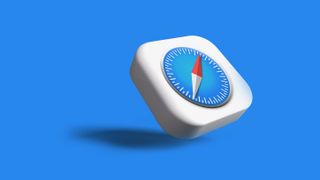
- Quick steps

Tools and Requirements
Step by step guide to using the safari password manager, final thoughts.
You probably already know about iCloud if you're using at least one Apple device. The cloud storage and synchronization service allows it to store and access content across multiple devices, including Mac, iPhone, iPad, and more. These include files and information like documents, photos, music, video, and contacts.
Apple's iCloud service is also at the heart of the iCloud Keychain , where you can store website usernames/passwords, among other items. In this how-to, we're concentrating on how to add, edit, and delete Safari password content. Similar tools are available on other browsers like Microsoft Edge and Mozilla Firefox .
- You should also consider the best browsers and best secure browsers .
Steps for saving, viewing and managing passwords
- Before you can save any username/password combinations, you must first be sure to have an Apple ID or iCloud account.
- From there, you can begin adding usernames and passwords for websites you frequent.
- You can also take advantage of Apple's new passkey feature.
- Safari is only available on Apple devices such as Mac, iPhone, and iPad.
1. Go into the manager
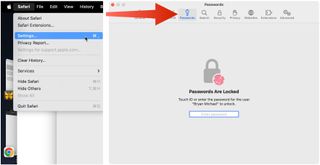
To get started, you must first create an Apple ID . The username/password combinate is usable across all Apple devices to log into iCloud.com. You can proceed once you have an Apple ID and are logged into your device.
On Mac, the Safari password manager is located by choosing Safari on the menu bar at the top left of your Mac. From there, click Settings from the pull-down menu.
Next, click on the Passwords option at the top. Input your password as needed.
2. Adjust existing password settings

You can adjust password information in the iCloud Keychain directly from Safari. To get started, go into the Passwords section of Mac Settings (see above) and log in as necessary. Then, use the search box on the left side of the display to find the password information you wish to change. Click Edit .
You can change the username and password for a website and add notes when applicable. After making a change, click Save .
Click Delete Password to delete the password information.
Thanks to iCloud, any changes you make here will also be reflected in other Apple devices that use your Apple ID.
4. Using Autofill in Safari
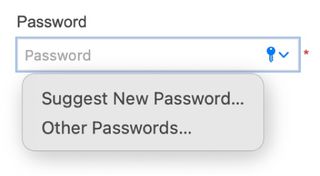
With AutoFill, you can fill in your previously saved usernames and website passwords. The tool is also a great way to add a new username/password combination for the first time and to create a strong password.
You will see AutoFill pop up when a website asks you to create a password.
You will see an Autofill prompt In Safari when it's time to use or create a password.
Click the AutoFill Key button, then choose Suggest New Password . For optimal security, you should use the suggested strong password. However, if you choose not to use the suggested password, you can easily select the password field, click “ Don’t Use ,” and enter your preferred password.
From there, enter the rest of the required information to create the website account.
Why use a separate password manager instead of a browser?
While most web browsers have their own password management feature, except for Safari which incorporates it into iCloud Keychain, in-browser password managers have limitations. They can only be used with one specific browser and cannot be accessed from other browsers. On the other hand, standalone password managers are compatible with any browser on your device, making them a more versatile option. Moreover, it is important to consider security when choosing a password manager. Browsers are not updated as frequently as standalone password managers, which can pose a security risk in case of a breach.
Does Safari have a built-in VPN?
Like many other browsers, Safari does not come with a pre-installed VPN. However, several reliable third-party VPNs like ExpressVPN, NordVPN, and SurfShark can easily be integrated with Safari. With a VPN, you can significantly boost the security and privacy of your online activities.
Are browser password managers safe?
To guarantee the safety of your passwords, using browser password managers like Safari with encryption is a great first step. However, there are additional measures you can take to further enhance your protection. It is highly recommended to create a strong and secure master password. The newest optional feature in Microsoft Edge mandates that you input your master password before making any changes to the password manager, thereby adding an extra layer of security. Regularly backing up your password manager is also a wise precaution in case of loss or theft. Another crucial step is creating a Firefox profile, allowing content synchronization across devices. This ensures that any changes made on your computer are reflected on your mobile device and vice versa.
What is iCloud Keychain?
iCloud Keychain is a highly reliable password manager that securely stores sensitive information such as passwords and credit card details in an online vault as part of Apple’s iCloud suite of services. Users can easily access their stored data by simply logging in to the same iCloud account on any Apple device. Thanks to the end-to-end encryption feature, user data is protected and can only be accessed by the user, even in the unlikely event of an iCloud account breach. Furthermore, the two-factor authentication feature provides an extra layer of security to user accounts, ensuring that they remain safe and secure at all times.
What are Apple Passkeys?
Apple Passkeys hope to eliminate the need for passwords eventually. This authentication method adheres to industry standards and guarantees improved security features while streamlining the login experience.
Passkeys create a unique cryptographic key pair for every website or application you use. The website or app stores the public key while the private one remains on your device. When you log in, your device produces a cryptographic signature using the private key. The website or application can then authenticate your identity by verifying this signature. With Passkeys, you can rest assured that your online security is in good hands.
Like passwords, passkeys are kept in Apple's iCloud Keychain.
The built-in Safari password manager, part of the iCloud Keychain, makes tracking website usernames and passwords easier. Better still, those items carry over to other Apple devices, including iPhone and iPad. In the coming years, Apple hopes to eliminate the need for passwords and replace them with more secure passkeys. However, username and password combinations remain the most popular choice for website authentication.
You might also be interested in Google Chrome now supports passkey for everyone and the best free password managers .
Are you a pro? Subscribe to our newsletter
Sign up to the TechRadar Pro newsletter to get all the top news, opinion, features and guidance your business needs to succeed!

Bryan M. Wolfe is a staff writer at TechRadar, iMore, and wherever Future can use him. Though his passion is Apple-based products, he doesn't have a problem using Windows and Android. Bryan's a single father of a 15-year-old daughter and a puppy, Isabelle. Thanks for reading!
How to install Surfshark on Amazon Fire Stick
Dropbox confirms eSign tool hit by major data breach, confirms customer info leaked
Quordle today – hints and answers for Friday, May 3 (game #830)
Most Popular
- 2 Tesla EVs could get a massive range boost from new battery tech that promises a 373-mile range from a 10-minute charge
- 3 NYT Strands today — hints, answers and spangram for Wednesday, May 1 (game #59)
- 4 Another major pharmacy chain shuts following possible cyberattack
- 5 Hisense’s new 5,000 nits mini-LED TV is so bright you may need to wear shades
- 3 Love records, hate wires? This little black box lets you stream vinyl to your smart speakers
- 4 Hisense’s new 5,000 nits mini-LED TV is so bright you may need to wear shades
- 5 'If I buy cheap, I buy twice’: Loewe explains why its new OLED TV deal with LG helps it make a repairable premium TV that can last you much longer
Sign up for our daily newsletter
- Privacy Policy
- Advertise with Us
How to Make Mobile Safari Save Your Passwords on iOS
Security experts are always reminding us that our online accounts should have strong passwords. The only problem is that remembering strong passwords for various accounts can be a real drag. Luckily, you can make Safari save your passwords on iOS so that the next time you need to sign in to your accounts, you won’t have to enter them again. In this tutorial, we show you how to do so.
How to Allow Safari to Save Your Passwords
How to add your credentials to safari manually, how to stop safari from filling in your passwords.
- How to Delete a Password From Safari's AutoFill
Frequently Asked Questions
Also read: How to Customize Your iPhone or iPad Lock Screen
You might be wondering whether it is safe to save passwords on an iOS device. Yes, it is, as Apple uses its own utility known as Apple Keychain, which stores all your usernames and passwords and encrypts them so that only you can access them. In fact, even Apple can’t access your personal data. Here’s how to make Safari save your passwords on iPhone and iPad.
- Go to the site whose credentials you want Safari to save.
- Sign in as you usually would.

- In the next window, you’ll be asked if you want to save the login information in iCloud Keychain for the next time. If you tap on “Save Password,” your credentials will be saved.

The next time you visit the site, Safari will automatically fill in the information for you to sign in.
If you have multiple logins for that same website, you will see multiple options listed. Tap the one you want to use. If there’s a third, fourth, etc., that isn’t shown, click the “Passwords” link (just above your virtual keyboard). You’ll be able to find the correct one in your list of saved logins.
Moreover, if you ever change your password on the site, you will be asked whether you want to update your password.
Also read: Safari Not Working on Your iPhone? Here’s How to Fix It
Here’s how to manually add usernames and passwords to Safari’s AutoFill.
- Open the “Settings” app on your iOS device.
- Scroll down a bit and pick “Passwords.”

- Tap on the plus sign at the top.

- Fill in the information of the site you want to save.

- Double-check for any mistakes and tap “Done.”
The passwords are used and saved not only in Safari but in other browsers and other apps as well, meaning data is saved for both web apps and mobile apps, such as Dropbox.
As a result, if you sign in to the Dropbox web app and save your login information in Safari or another browser, then open the Dropbox app later, it will use the same login information that you previously stored.
Also read: How to Unlock Your iPhone with a Face Mask On
Let’s say you want to keep your passwords, sign-in emails, and usernames on Safari – it saves all three – but don’t want the browser to fill them in automatically. Here’s how to stop Safari from filling in your passwords.
- To disable the autofill feature, go to “Settings” and select “Passwords” there.
- Look for the option to toggle off the autofill for passwords and tap on it. As long as it’s off, you can keep your passwords saved in this section, but Safari won’t autofill them.

Also read: Everything You Need to Know About Using “Shared with You” in iOS 15
How to Delete a Password From Safari’s AutoFill
Here’s how to delete a password from Safari’s AutoFill database:
- Navigate to “Settings -> Passwords.”
- Tap on “Edit” in the top-right corner.

- Select each password you want to erase by tapping the circle to its left.

- Tap on the “Delete” option at the top left.

Also read: How to Delete Hidden Apps From Your iPhone
Why are my passwords not saving on my iPhone?
If your passwords are not saving on your iPhone, you need to recheck your settings to see if you have disabled the Keychain feature in iOS Settings accidentally. In the event that it’s enabled and Safari is still not saving your passwords, try clearing the saved cache data and cookies and revisit the website.
How does Apple know if my password is compromised?
Apple detects a compromised password by matching it up with a list of passwords that have appeared in a data leak. According to Apple, this feature uses strong cryptographic techniques to regularly check derivations of your passwords against a list of breached passwords in a secure and private way that doesn’t reveal your accounts or passwords to Apple.
Can I export the passwords Safari has saved?
Yes, you can export all the passwords Safari stores in Keychain and also import them to Chrome’s password manager . However, you can only do this on a Mac and not from your iPhone. To export a CSV file of your Safari passwords:
- Open Safari and navigate to “Preferences-> Passwords.”
- Enter your password when prompted.
- Click on the three dots on the left sidebar, then on “Export All Passwords,” and save the CSV file to your computer.
Our latest tutorials delivered straight to your inbox
Ojash has been writing about tech back since Symbian-based Nokia was the closest thing to a smartphone. He spends most of his time writing, researching, or ranting about Bitcoin. Ojash also contributes to other popular sites like MakeUseOf, SlashGear, and MacBookJournal.

How to Manage Your Passwords in Safari
Like other browsers, Safari has a built-in password manager that can autofill website usernames and passwords for you. Here's how to see, edit, and add saved passwords in Safari on the Mac and in iOS .

When you log into sites or create a new login, Safari will ask you if you want to save the password (and username). It can also save your credit cards and contact information. If you have iCloud 's Keychain Access set up, this saved information is also synced across your Mac and iOS devices in an encrypted file.
View and Edit Your Stored Passwords in Safari on the Mac
1. Go to Preferences in the Safari menu.

2. Click the Passwords tab.

Safari will show you the sites it has saved your logins for.
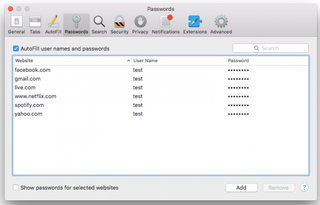
To copy the URL, username, or password, right-click on the login
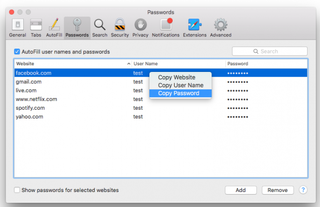
To show the password for an individual login:
Stay in the know with Laptop Mag
Get our in-depth reviews, helpful tips, great deals, and the biggest news stories delivered to your inbox.
1. Double-click the password field. You'll be prompted to enter your Apple password first.
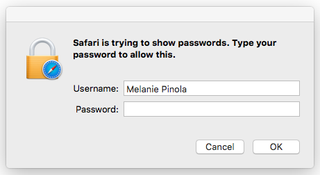
To show passwords for all or multiple logins:
1. Hold down the Command key while you click on sites to select them. 2. Check the "Show passwords for selected websites". Again, you'll be prompted to enter your Apple password before the passwords will be revealed.
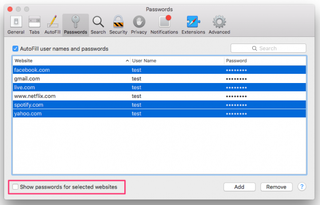
To delete a login:
1. Select it and click the Remove button.
To add a new login:
1. Click the Add button.
2. Enter the URL, username, and password.

View Your Stored Passwords in Safari on the iPad
In iOS, you can manage your saved passwords and add new ones from the Settings app.
1. Open the Settings app.
2. Tap Safari then Passwords.
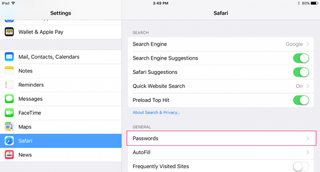
3. Use Touch ID or enter your passcode to continue.

Safari will list the passwords it has saved for you:
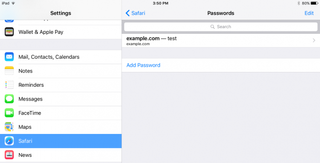
To view saved passwords:
1. Tap on the site name.

1. Tap Edit.
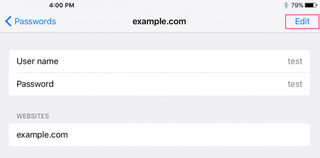
2. Tap the minus sign next to the site name.

3. Tap Delete.
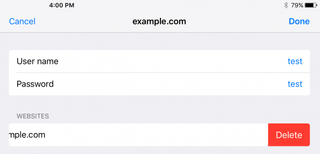
To add a new log in:
1. T ap Add Password
- How to Force Safari to Sync with iCloud
- How to Sync Safari Bookmarks with Chrome, Firefox and Internet Explorer
- How to Merge All Windows in Safari
World Password Day, created by Intel, sees Google make the biggest waves in 2024
73 million current, former AT&T accounts leaked to the dark web — here's what to do
HP Spectre x360 with Intel Ultra 7 gets $300 price cut in HP sale
Most Popular
- 2 It's been 30 years since Apple released this boldly innovative product
- 3 Lenovo Yoga 7i vs Lenovo Slim 7i: Which Gen 9 Lenovo laptop should you buy?
- 4 How to use Quick Share on Android: Send photos and files in seconds
- 5 Apple M4 chip rumors: Everything you need to know
How to manage passwords on iPhone and iPad with Safari AutoFill
Gotten used to creating and saving passwords with the built-in Safari AutoFill feature on iPhone and iPad, but aren’t sure where they are stored? Or maybe just want to get the feature turned on? Read along for how to manage passwords on iPhone and iPad.
It’s become more and more seamless to use saved passwords in Safari to log in to websites and apps without having to manually type in your credentials on iPhone and iPad. However, sometimes you might need to view your passwords, or you might want to edit or remove old credentials.
We’ll also look at how to turn on Safari AutoFill Passwords on iPhone and iPad if you aren’t using the feature.
How to save and manage passwords on iPhone and iPad
Turn on safari autofill passwords on iphone and ipad.
Safari AutoFill Passwords is the feature that can automatically save and update your passwords on iPhone and iPad as well as offer to create automatic strong passwords when signing up for new accounts online.
It’s also end-to-end encrypted with iCloud Keychain.
- On your iPhone or iPad, open the Settings app
- Swipe down and choose Passwords
- Tap AutoFill Passwords at the top
- If you have a third-party password manager installed you may see the option to allow filling from multiple sources (e.g. 1Password, etc.) along with Apple’s iCloud Keychain
- Now when you log in to accounts, websites, etc. your iPhone will ask if you’d like to AutoFill, save/update or auto create a new password
- Also consider using Sign in with Apple or Sign in with Google/Facebook/Twitter etc. when creating new accounts as it means you don’t have to create another unique login and is a more secure way to manage your credentials

Keep in mind you’ll need to use the Safari app (Apple’s default browser on iPhone) to take advantage of this feature.
Also, if you’d like to save your passwords from iPhone to your other Apple devices, make sure to head to the Settings app > Your name > iCloud > Keychain > toggle on iCloud Keychain.
We’ve also got a walkthrough on using 2FA AutoFill in iOS:
- Here’s how to use the native iPhone 2FA code generator and autofill
How to view and edit saved passwords
The easiest way to update passwords is to head to the website or app and type in the new password. Safari AutoFill Passwords will ask if you’d like to update it.
Alternatively, here’s how to view and edit all your saved passwords manually:
- Open the Settings app
- Swipe down and tap on Passwords
- Tap Edit in the top right corner to delete multiple logins or swipe from right to left to delete individual items.
- Choose Edit in the top right corner to manually change your stored user name or password
If you see a caution icon next to a saved item (triangle with exclamation mark), that indicates you’re using the same password for multiple accounts or your password may have been compromised in a data breach.
It’s important to change your passwords for any reused or compromised passwords. Apple even includes a Change Password on Website button when you’re looking at saved passwords to easily take care of them.
Read more 9to5Mac tutorials:
- How to take a scrolling screenshot on iPhone
- How to type the Apple logo on Mac, iPhone, and iPad
FTC: We use income earning auto affiliate links. More.

Check out 9to5Mac on YouTube for more Apple news:

Apple's tablet debuted in 2010. Since the origin…

Introduced in 2007 by Steve Jobs, iPhone is Appl…
Michael is an editor for 9to5Mac. Since joining in 2016 he has written more than 3,000 articles including breaking news, reviews, and detailed comparisons and tutorials.
Michael Potuck's favorite gear

Satechi USB-C Charger (4 ports)
Really useful USB-C + USB-A charger for home/work and travel.

Apple Leather MagSafe Wallet
My slim wallet of choice for iPhone 12

Manage push notifications

Tips & Tricks
Troubleshooting, how to view saved passwords in safari on mac.

If you save passwords with Safari on Mac, you can easily go back and view those saved passwords. This is fantastic if you’ve lost a login, or perhaps if you forgot the password to one of your online accounts.
As long as you previously signed in to your account from Safari on Mac, iPhone, or iPad, you may be able to see the exact password you used thanks to iCloud Keychain.
Safari has a built-in password management solution that fills out website usernames and passwords for you. Every time you log in to a website in Safari for the first time, the browser will ask you if you want to save the password. When you click “Save Password”, Safari keeps a record of this data so that you don’t have to type in these details the next time you log in. If you’ve been using this feature regularly, you could potentially forget your password. Thankfully, you can recover the password pretty quickly even if you lose it. Let’s review how to see and reveal a saved password directly in Safari for Mac.
How to Find Saved Passwords in Safari for Mac
Viewing all the passwords you’ve entered while browsing in Safari is a pretty simple and straightforward procedure. Just follow the steps below to get started.
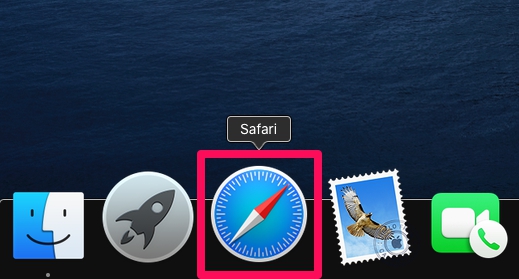
Pretty useful, right? Viewing saved passwords in Safari on MacOS is incredibly convenient, for many obvious reasons.
Keep in mind that you will only be able to find this lost password in Safari if you chose to “save password” when you typed in your login credentials on the particular website. You can also manually add account information to Safari for websites in the same menu as a one-time thing and you don’t have to remember your password again.
There’s one other way to view all your saved passwords in Safari and that’s using Keychain Access . Here, you’ll see password information for all the sign-ins you’ve made from your Mac and not just Safari. However, if you don’t use iCloud Keychain and have changed the password for any of your accounts from another device, this information that’s stored on your Mac will be outdated and can no longer be used unless you update it manually.
All the passwords you enter in Safari are securely stored in the keychain. Furthermore, all the web passwords that Safari save to Keychain will be synced across all your other Apple devices with the help of iCloud, meaning all of your iPhone, iPad, and Mac hardware will have access to the keychain saved data.
Obviously this covers the Mac, but you can see accounts and view passwords on iPhone and iPad with Keychain too .
Were you able to view all the saved passwords in Safari and regain access to the website you needed to? Were you able to use this method to recover your forgotten password? If not, did you find any other solution? What are your overall thoughts on Safari’s built-in password manager? Do share your valuable opinions and experience below.
Enjoy this tip? Subscribe to our newsletter!
Get more of our great Apple tips, tricks, and important news delivered to your inbox with the OSXDaily newsletter.
You have successfully joined our subscriber list.
Related articles:
- How to Import Saved Passwords from Safari to Chrome
- How to Edit Saved Passwords on Mac with Keychain Access
- How to Update & Edit Saved Passwords in Safari Autofill on Mac
- How to Import Passwords & Logins from Chrome to Safari on Mac
One Comment
» Comments RSS Feed
I wish the passwords were dated the date of origination. I have found instances of multiple passwords for the same web page, which makes selecting the correct password more zoo.
Leave a Reply
Name (required)
Mail (will not be published) (required)
Subscribe to OSXDaily
- - How to Import Google Chrome Data into Microsoft Edge
- - How to Convert Photos to Videos on iPhone & iPad
- - How to Hide iPhone Keyboard When It’s Covering Buttons & Won’t Go Away
- - How to Use AirPods with Apple TV
- - 6 Useful Apple Watch Tips
- - Beta 3 of iOS 17.5, macOS Sonoma 14.5, iPadOS 17.5, Available for Testing
- - Apple Event Set for May 7, New iPads Expected
- - Beta 2 of iOS 17.5, iPadOS 17.5, macOS Sonoma 14.5, Available for Testing
- - Opinion: Shiny Keys on MacBook Air & Pro Are Ugly and Shouldn’t Happen
- - MacOS Ventura 13.6.6 & Safari 17.4.1 Update Available
iPhone / iPad
- - How to Use the Latest GPT 4 & DALL-E 3 Free on iPhone & iPad with Copilot
- - How to Bulk Image Edit on iPhone & iPad wth Copy & Paste Edits to Photos
- - What Does the Bell with Line Through It Mean in Messages? Bell Icon on iPhone, iPad, & Mac Explained
- - Beta 4 of macOS Sonoma 14.5, iOS 17.5, iPadOS 17.5, Available for Testing
- - How to Customize the Finder Sidebar on Mac
- - How to Uninstall Apps on MacOS Sonoma & Ventura via System Settings
- - Make a Website Your Mac Wallpaper with Plash
- - 15 Mail Keyboard Shortcuts for Mac
- - What’s a PXM File & How Do You Open It?
- - Fixing Apple Watch False Touch & Ghost Touch Issues
- - Fix a Repeating “Trust This Computer” Alert on iPhone & iPad

About OSXDaily | Contact Us | Privacy Policy | Sitemap
This website is unrelated to Apple Inc
All trademarks and copyrights on this website are property of their respective owners.
© 2024 OS X Daily. All Rights Reserved. Reproduction without explicit permission is prohibited.
How To Save Passwords In Safari

- Software & Applications
- Browsers & Extensions
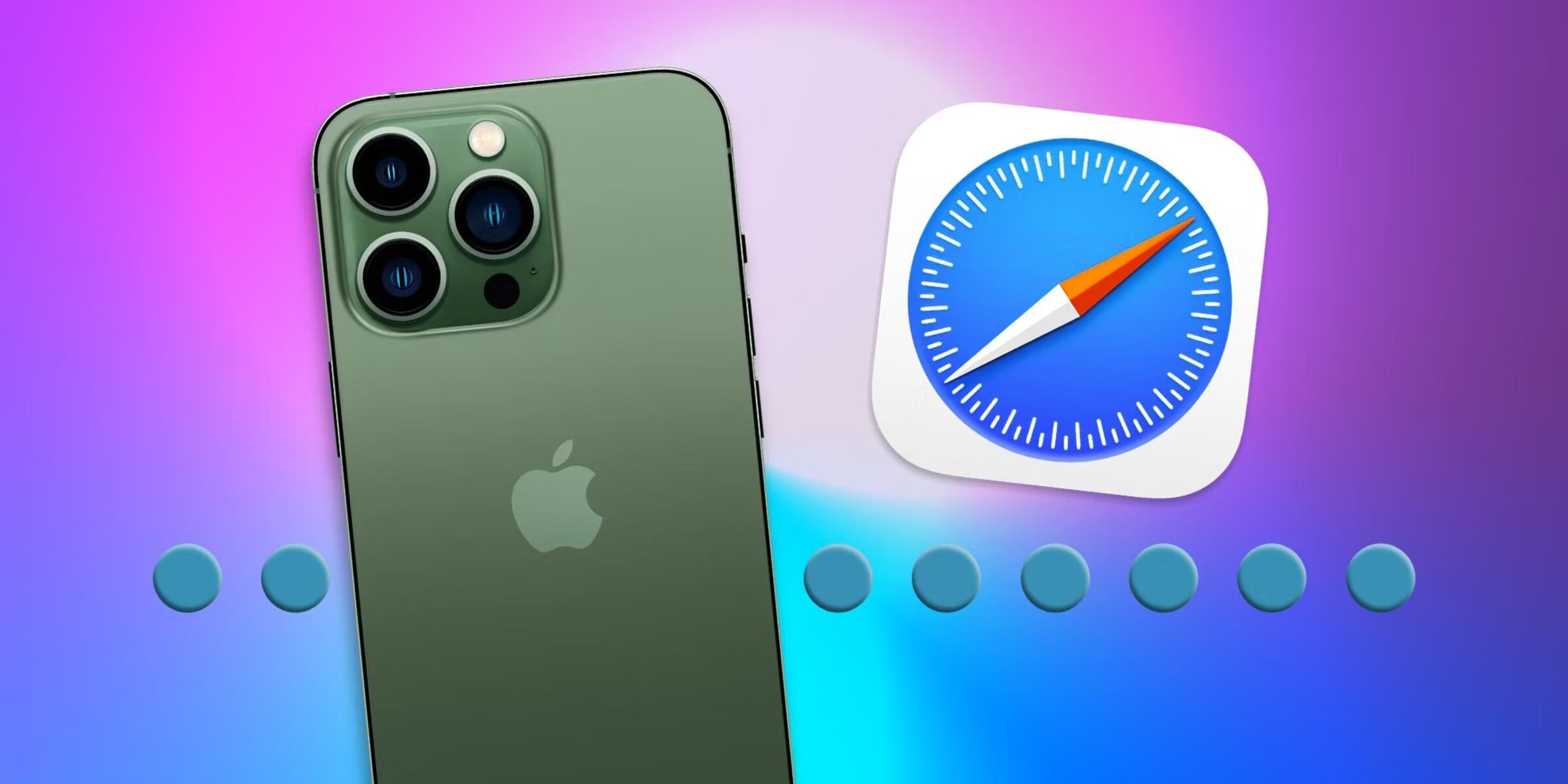
Introduction
In today's digital age, where we juggle numerous online accounts, remembering all the passwords can be a daunting task. This is where the convenience of saving passwords in Safari, Apple's web browser, comes to the rescue. Safari offers a built-in feature called AutoFill, which securely stores and manages your passwords, making the login process seamless and hassle-free.
By leveraging Safari's password-saving capabilities, users can enjoy a more efficient and secure browsing experience. This article will guide you through the process of enabling AutoFill for passwords, saving passwords for websites, managing saved passwords, and utilizing iCloud Keychain for password syncing across your Apple devices.
With the increasing emphasis on cybersecurity , it's crucial to adopt best practices for managing passwords. Safari's password-saving functionality not only streamlines the login process but also enhances security by generating and storing strong, unique passwords for each website. This reduces the risk of using weak or repetitive passwords, which are susceptible to cyber threats.
As we delve into the intricacies of saving passwords in Safari, you'll discover how this feature can simplify your online interactions while fortifying your digital security. Whether you're a seasoned Safari user or a newcomer to the Apple ecosystem, harnessing the power of Safari's password-saving capabilities can elevate your browsing experience to new heights.
So, let's embark on this journey to unlock the full potential of Safari's password-saving functionality, empowering you to navigate the digital landscape with confidence and ease.
Enabling AutoFill for Passwords
Enabling AutoFill for passwords in Safari is a fundamental step towards harnessing the full potential of this feature. By activating AutoFill, you empower Safari to securely store and automatically populate your login credentials, streamlining the process of accessing your favorite websites. Here's how you can enable AutoFill for passwords in Safari:
Accessing Safari Preferences : To commence the process, launch Safari and navigate to the "Safari" menu located in the top-left corner of the screen. From the dropdown menu, select "Preferences" to delve into Safari's settings.
Selecting the AutoFill Tab : Within the Preferences window, click on the "AutoFill" tab. This is where you can configure various AutoFill options, including passwords, credit cards, and other forms.
Enabling the Password AutoFill Feature : Locate the "User names and passwords" option within the AutoFill tab and ensure that the checkbox next to it is ticked. This action activates Safari's ability to save and automatically fill in your passwords when visiting websites.
Optional: Utilizing iCloud Keychain : If you're using multiple Apple devices, consider leveraging iCloud Keychain to sync your saved passwords across all your devices seamlessly. By enabling iCloud Keychain, you can access your passwords on your iPhone, iPad, or other Mac devices, ensuring a consistent and secure browsing experience across your Apple ecosystem.
Verifying the Settings : Once you've enabled the Password AutoFill feature, take a moment to review and customize the settings to align with your preferences. You can fine-tune the AutoFill options to suit your specific needs, such as enabling or disabling the AutoFill of contact information and credit card details.
By following these steps, you've successfully enabled AutoFill for passwords in Safari, paving the way for a more efficient and secure browsing experience. With Safari poised to securely store and manage your passwords, you're now ready to explore the seamless convenience of automatic password entry, freeing you from the burden of manually inputting credentials each time you visit your favorite websites.
Enabling AutoFill for passwords in Safari is a pivotal stride towards optimizing your digital interactions, allowing you to navigate the web with enhanced convenience and peace of mind. As we continue our exploration of Safari's password-saving capabilities, let's delve into the process of saving passwords for websites, further enhancing your browsing experience.
Saving Passwords for Websites
When it comes to simplifying your online interactions, Safari's ability to save passwords for websites is a game-changer. By securely storing your login credentials for various websites, Safari streamlines the authentication process, allowing you to effortlessly access your accounts with just a few clicks. Let's delve into the seamless process of saving passwords for websites in Safari, empowering you to unlock a world of convenience and efficiency.
The Process of Saving Passwords
Upon visiting a website and entering your login credentials, Safari recognizes the opportunity to save your password for future use. A prompt typically appears at the top of the browser window, asking if you'd like to save the password. By clicking "Save Password," Safari securely stores the login information associated with that specific website.
Customizing Saved Passwords
Safari offers the flexibility to customize and manage your saved passwords. By accessing the Safari Preferences and navigating to the "Passwords" tab, you can view a list of websites for which passwords have been saved. This interface allows you to edit or remove saved passwords, providing you with full control over your stored credentials.
Enhanced Security with Strong Passwords
In addition to simplifying the login process, Safari promotes enhanced security by generating strong, unique passwords for each website. When creating a new account or updating your password on a website, Safari can suggest a robust password, which it then securely stores. This proactive approach mitigates the risks associated with using weak or repetitive passwords, fortifying your digital security.
Seamless Access Across Devices
If you're an avid user of multiple Apple devices, Safari's password-saving functionality seamlessly extends to your iPhone, iPad, and other Mac devices through iCloud Keychain. By enabling iCloud Keychain, your saved passwords are securely synchronized across all your devices, ensuring a consistent and secure browsing experience regardless of the device you're using.
Embracing Effortless Browsing
By embracing the capability to save passwords for websites in Safari, you're embarking on a journey towards effortless browsing. With the burden of remembering and manually entering passwords lifted, you can navigate the web with unparalleled ease and efficiency. Safari's seamless integration of password-saving features empowers you to focus on enjoying your online experiences without the hassle of repetitive logins.
As you harness the power of Safari's password-saving capabilities, you're poised to elevate your digital interactions to new heights. The convenience and security offered by Safari's password-saving functionality redefine the way you engage with the online world, ensuring that every login is a seamless and secure experience.
Managing Saved Passwords
Managing saved passwords in Safari empowers users with the ability to oversee and customize their stored login credentials, ensuring a seamless and secure browsing experience. Safari provides a user-friendly interface for effortlessly managing saved passwords, allowing individuals to maintain control over their digital security while enjoying the convenience of automatic login. Let's delve into the intricacies of managing saved passwords in Safari, unveiling the tools and functionalities that put you in the driver's seat of your online authentication process.
Accessing Saved Passwords
To embark on the journey of managing saved passwords, users can access the Safari Preferences and navigate to the "Passwords" tab. Here, a comprehensive list of websites for which passwords have been saved is displayed, providing a clear overview of the stored credentials. This intuitive interface serves as the central hub for overseeing and customizing your saved passwords, offering a streamlined approach to password management.
Editing and Removing Passwords
Safari's password management interface allows for seamless editing and removal of saved passwords. Users have the flexibility to update or modify their stored credentials, ensuring that their login information remains current and accurate. Additionally, the option to remove saved passwords from the list empowers users to maintain a tidy and secure repository of stored credentials, aligning with their evolving online interactions.
Security and Privacy Considerations
As users navigate the process of managing saved passwords, Safari upholds stringent security measures to safeguard this sensitive information. Access to the saved passwords within Safari Preferences is protected by the user's system password, adding an extra layer of security to prevent unauthorized access. This robust security framework ensures that users can manage their saved passwords with confidence, knowing that their sensitive login credentials are shielded from prying eyes.
iCloud Keychain Integration
For individuals immersed in the Apple ecosystem, Safari's seamless integration with iCloud Keychain extends the management of saved passwords across multiple devices. By enabling iCloud Keychain, users can synchronize their saved passwords across their iPhone, iPad, and other Mac devices, fostering a cohesive and secure browsing experience. This integration ensures that managing saved passwords transcends individual devices, offering a unified approach to password management.
Empowering User Control
The process of managing saved passwords in Safari places the reins of control firmly in the hands of the user. With the ability to edit, remove, and synchronize saved passwords, individuals can tailor their password management experience to align with their unique preferences and security considerations. This user-centric approach underscores Safari's commitment to empowering users with the tools to oversee and safeguard their digital identities.
As users navigate the landscape of managing saved passwords in Safari, they are equipped with the resources to curate a secure and personalized repository of login credentials. This proactive approach to password management not only streamlines the authentication process but also reinforces the foundation of digital security, ensuring that every login is a seamless and protected interaction.
Using iCloud Keychain for Password Syncing
Utilizing iCloud Keychain for password syncing is a pivotal aspect of Safari's password-saving capabilities, offering a seamless and secure method to synchronize saved passwords across your Apple devices. iCloud Keychain serves as a centralized vault for your login credentials, ensuring that your passwords are effortlessly accessible and consistently updated across your iPhone, iPad, and Mac devices. This integration streamlines the management of saved passwords, fostering a cohesive and secure browsing experience that transcends individual devices.
Seamless Synchronization Across Devices
By enabling iCloud Keychain, Safari seamlessly synchronizes your saved passwords, ensuring that your login credentials are readily available across all your Apple devices. Whether you're accessing a website on your iPhone, iPad, or Mac, iCloud Keychain harmonizes your saved passwords, eliminating the need to manually input or update credentials on each device. This seamless synchronization not only enhances convenience but also promotes a consistent and secure browsing experience, regardless of the device you're using.
Effortless Setup and Management
The integration of iCloud Keychain with Safari is designed to be user-friendly and straightforward. Upon enabling iCloud Keychain on your primary device, such as your iPhone or Mac, the saved passwords are automatically propagated to your other Apple devices linked to the same iCloud account. This effortless setup process minimizes the administrative burden, allowing users to focus on their online interactions without the hassle of managing passwords across multiple devices.
Robust Security Measures
iCloud Keychain prioritizes the security and privacy of your saved passwords, implementing robust encryption and authentication protocols to safeguard your sensitive login credentials. The synchronized passwords are encrypted and stored securely, ensuring that only authorized devices linked to your iCloud account can access and utilize the saved passwords. This stringent security framework instills confidence in users, assuring them that their synchronized passwords are shielded from unauthorized access.
Password Generation and Autofill Capabilities
In addition to synchronizing saved passwords, iCloud Keychain offers the functionality to generate strong, unique passwords for new accounts or password updates. Safari can suggest and save these robust passwords, further fortifying your digital security by mitigating the risks associated with weak or repetitive passwords. Furthermore, iCloud Keychain seamlessly integrates with Safari's Autofill feature, allowing for automatic population of login credentials across your Apple devices, enhancing the efficiency of your online interactions.
Empowering a Unified Browsing Experience
The integration of iCloud Keychain with Safari transcends individual devices, empowering users with a unified browsing experience that seamlessly extends across their Apple ecosystem. By harmonizing saved passwords and promoting consistent security measures, iCloud Keychain reinforces the foundation of digital security while fostering a user-centric approach to password management. This unified browsing experience encapsulates the essence of convenience, security, and seamless integration, elevating the way users engage with the digital landscape.
Incorporating iCloud Keychain for password syncing into Safari's arsenal of password-saving capabilities not only simplifies the management of saved passwords but also reinforces the pillars of digital security. This integration epitomizes the synergy between convenience and security, empowering users to navigate the online world with confidence and ease, knowing that their saved passwords are harmonized and protected across their Apple devices.
Leave a Reply Cancel reply
Your email address will not be published. Required fields are marked *
Save my name, email, and website in this browser for the next time I comment.
- Crowdfunding
- Cryptocurrency
- Digital Banking
- Digital Payments
- Investments
- Console Gaming
- Mobile Gaming
- VR/AR Gaming
- Gadget Usage
- Gaming Tips
- Online Safety
- Software Tutorials
- Tech Setup & Troubleshooting
- Buyer’s Guides
- Comparative Analysis
- Gadget Reviews
- Service Reviews
- Software Reviews
- Mobile Devices
- PCs & Laptops
- Smart Home Gadgets
- Content Creation Tools
- Digital Photography
- Video & Music Streaming
- Online Security
- Online Services
- Web Hosting
- WiFi & Ethernet
- Browsers & Extensions
- Communication Platforms
- Operating Systems
- Productivity Tools
- AI & Machine Learning
- Cybersecurity
- Emerging Tech
- IoT & Smart Devices
- Virtual & Augmented Reality
- Latest News
- AI Developments
- Fintech Updates
- Gaming News
- New Product Launches
Learn To Convert Scanned Documents Into Editable Text With OCR
Top mini split air conditioner for summer, related post, comfortable and luxurious family life | zero gravity massage chair, when are the halo awards 2024, what is the best halo hair extension, 5 best elegoo mars 3d printer for 2024, 11 amazing flashforge 3d printer creator pro for 2024, 5 amazing formlabs form 2 3d printer for 2024, related posts.
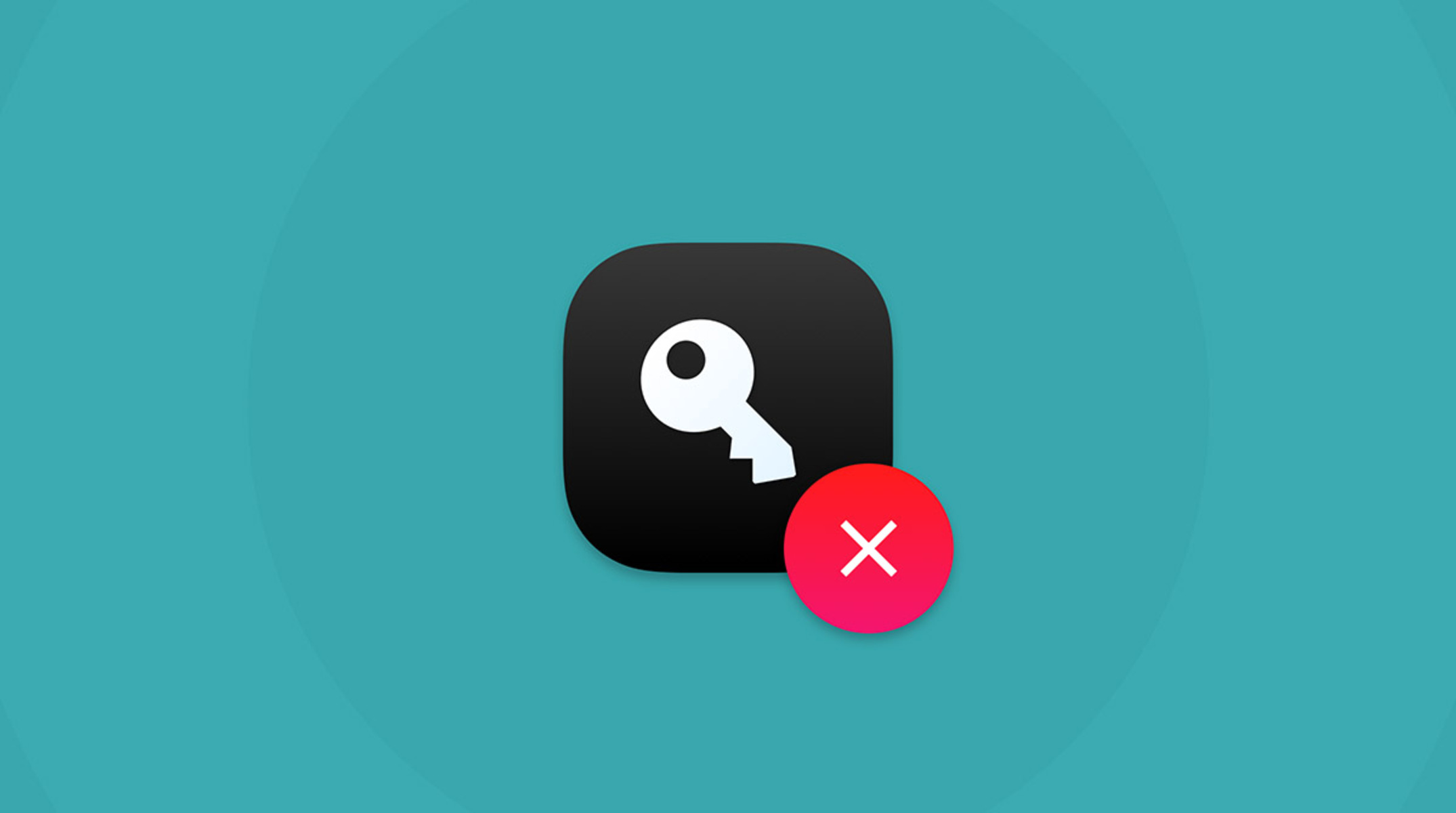

How To Delete Passwords On Safari
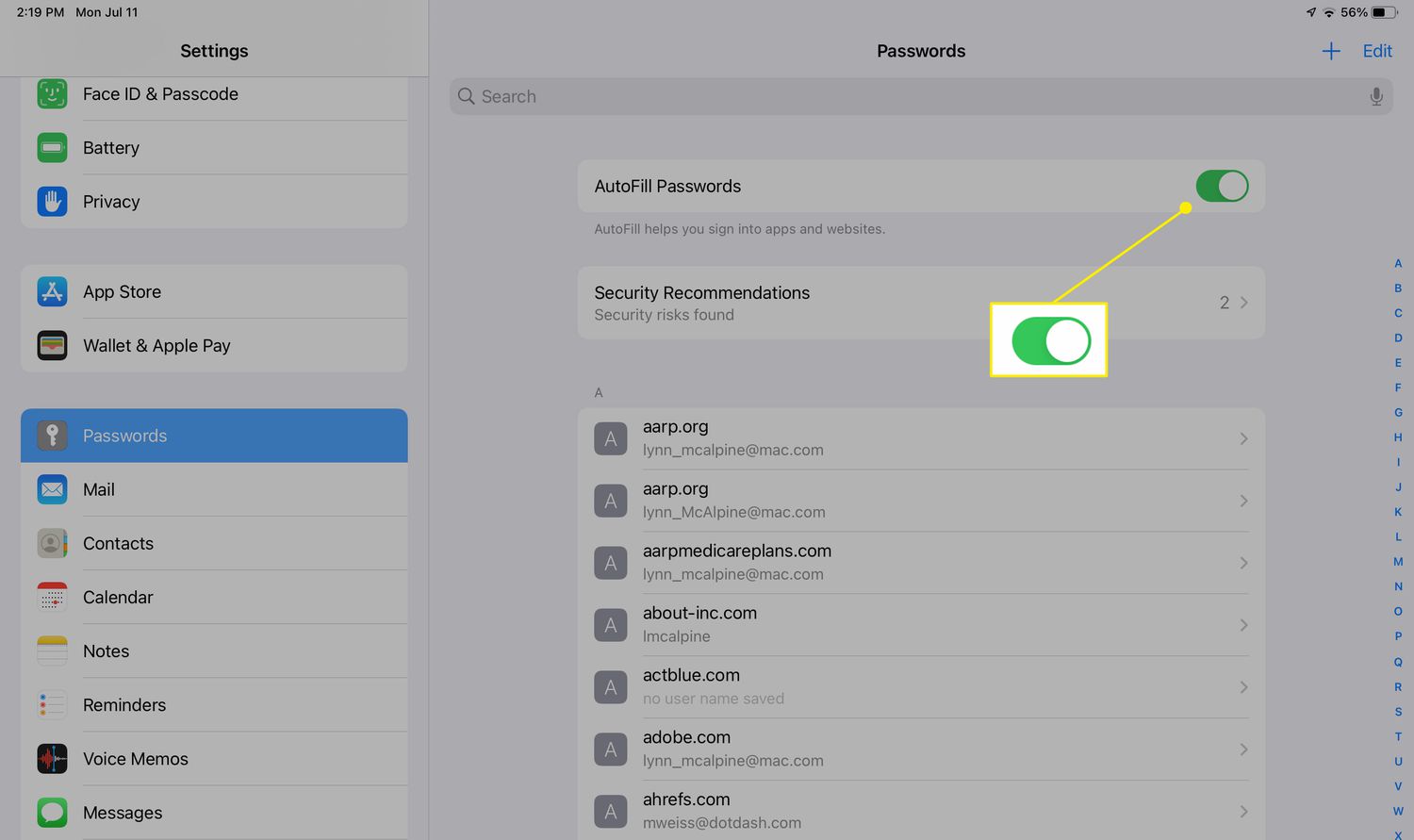
How To Save Password On Safari IPad
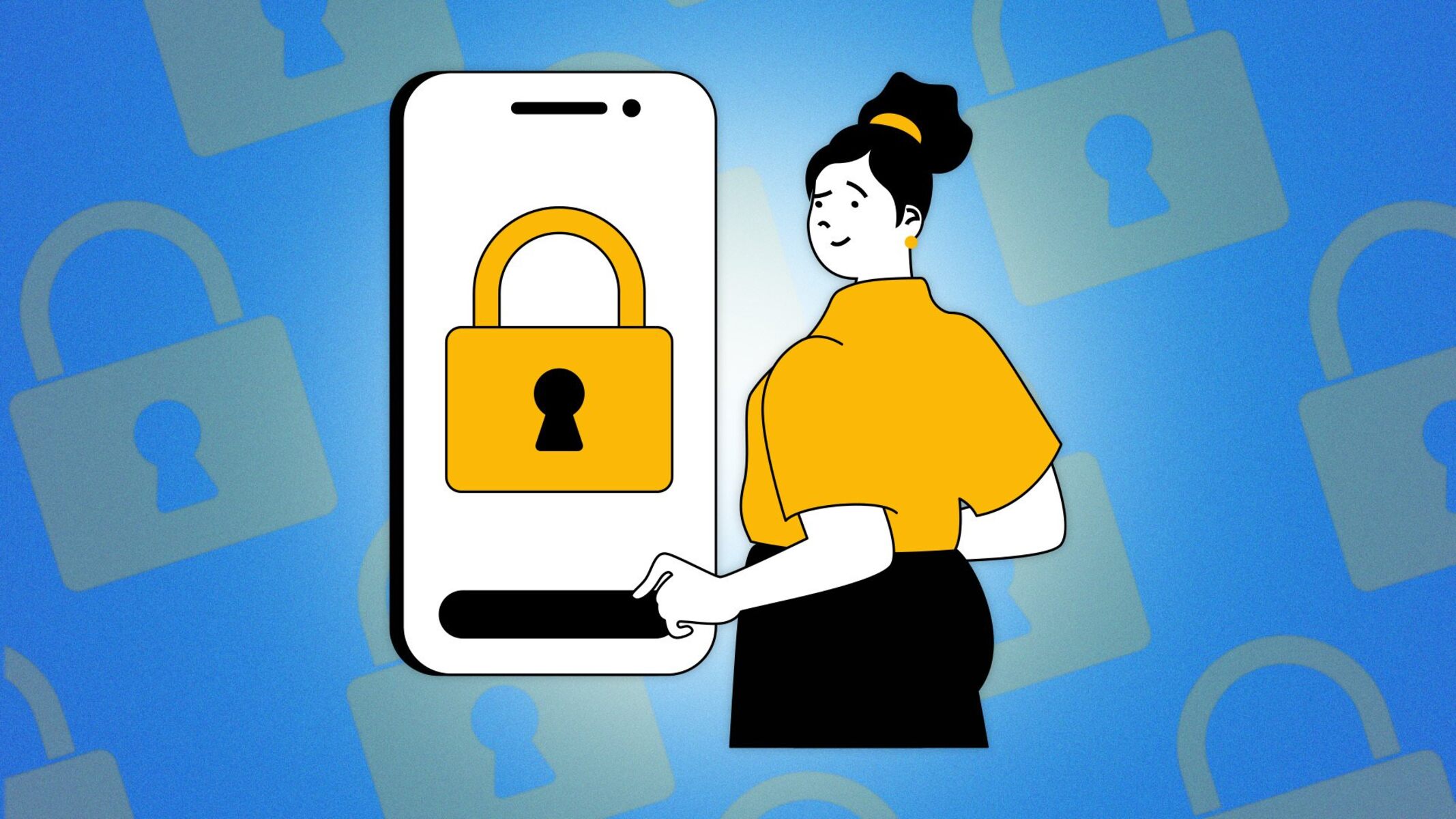
How To Unsave Passwords On Safari
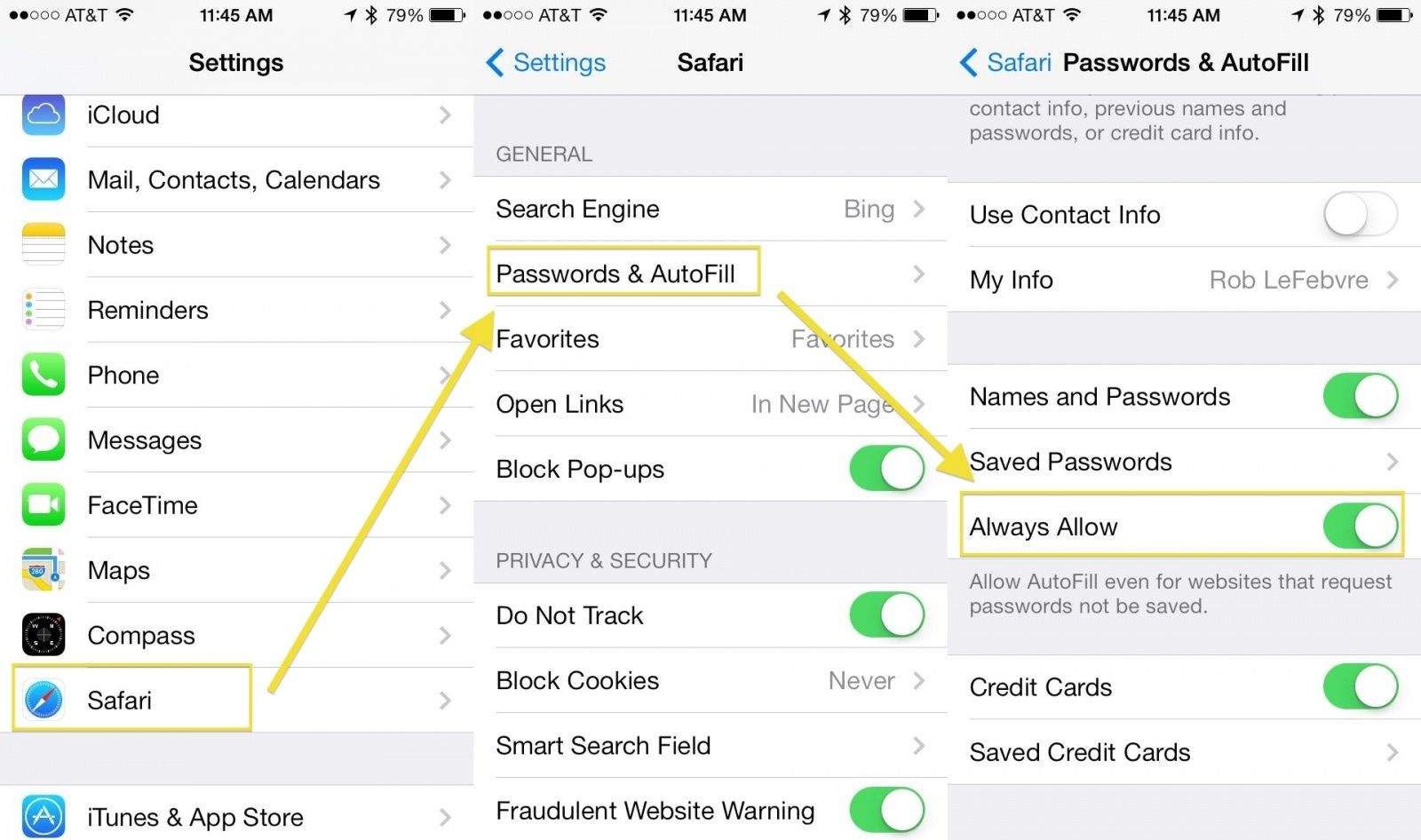
How To Delete Saved Passwords In Safari

How To Find Safari Saved Passwords On Mac
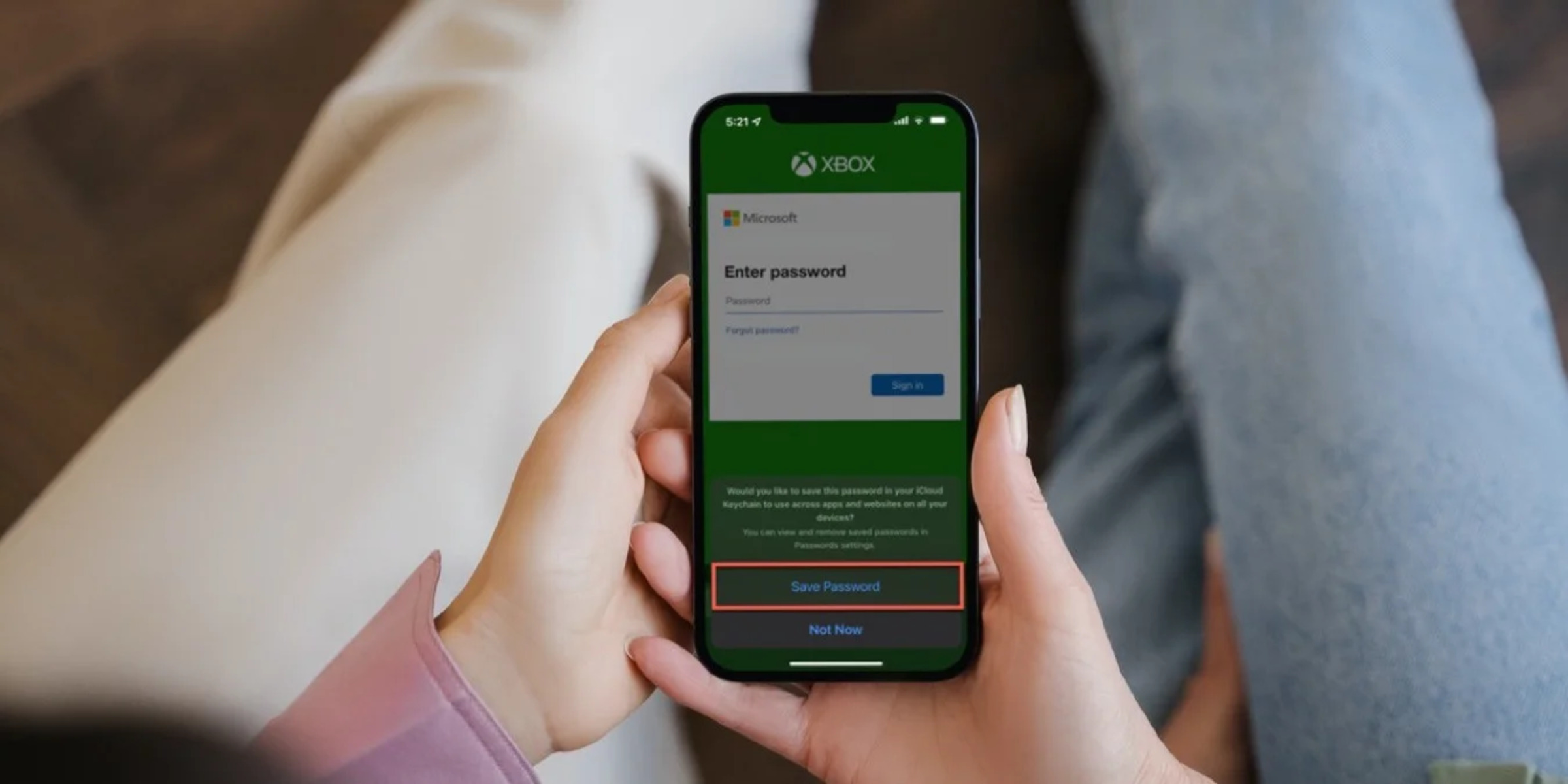
How To Export Passwords From Safari IPhone
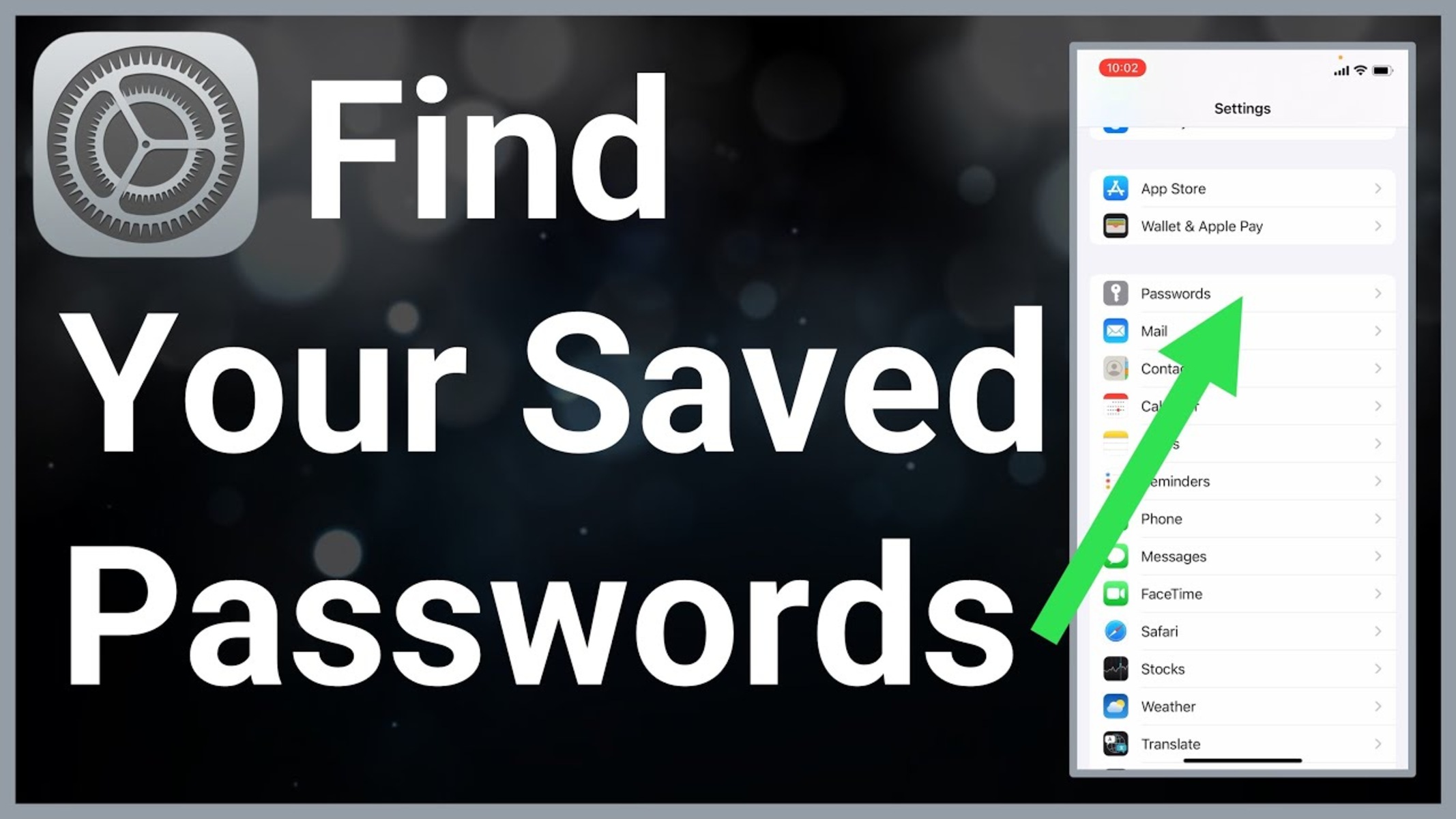
How To See Saved Passwords On Safari IPhone

How To Undo “Never Save Password For This Site” In Safari
Recent stories.

Fintechs and Traditional Banks: Navigating the Future of Financial Services

AI Writing: How It’s Changing the Way We Create Content

How to Find the Best Midjourney Alternative in 2024: A Guide to AI Anime Generators

How to Know When it’s the Right Time to Buy Bitcoin

Unleashing Young Geniuses: How Lingokids Makes Learning a Blast!

- Privacy Overview
- Strictly Necessary Cookies
This website uses cookies so that we can provide you with the best user experience possible. Cookie information is stored in your browser and performs functions such as recognising you when you return to our website and helping our team to understand which sections of the website you find most interesting and useful.
Strictly Necessary Cookie should be enabled at all times so that we can save your preferences for cookie settings.
If you disable this cookie, we will not be able to save your preferences. This means that every time you visit this website you will need to enable or disable cookies again.
Download Free
How to Save Passwords on Safari
It's free and super easy to set up
Have you ever found yourself constantly forgetting the passwords to your online accounts? With Safari's password management features, you can easily save and store your passwords for quick and easy access. In this guide, we'll take a deep dive into how to save passwords on Safari, as well as how to utilize features like AutoFill, iCloud Keychain, and the Password Generator to further simplify your online experience.
Understanding Safari's Password Management Features
Safari is a popular web browser that offers a variety of features that make browsing the internet easier and more convenient. One of the most useful features of Safari is its password management tools. These tools can help you store, access, and create strong passwords for your online accounts. In this article, we will explore three of the most popular password management features offered by Safari: AutoFill, iCloud Keychain, and the Password Generator.
AutoFill is a tool that is integrated into Safari's settings. It allows users to automatically fill in information, like names, addresses, and credit card information, when filling out forms online. This feature can save you a lot of time and effort, especially if you frequently fill out online forms. AutoFill can also be used to save and store passwords for different websites. This means that you don't have to remember all of your passwords, as Safari will do it for you.
One thing to keep in mind when using AutoFill is that you should only use it on secure websites. This is because AutoFill stores your personal information, including your passwords, on your device. If a website is not secure, it could be vulnerable to hackers who could access your personal information.
iCloud Keychain
iCloud Keychain is another password management feature that is available on all Apple devices and can be enabled in your Safari settings. With iCloud Keychain, you can sync your stored passwords and credit card information across all of your Apple devices. This feature ensures that you never lose a password again, even if you lose your device.
Another benefit of iCloud Keychain is that it can suggest strong, unique passwords for your online accounts. This means that you don't have to come up with your own passwords, which can be difficult to remember and easy to guess. iCloud Keychain can also store other sensitive information, like Wi-Fi network passwords and website usernames.
Password Generator
The Password Generator is another amazing feature that Safari offers. It helps you generate strong and unique passwords for your online accounts, helping to keep your data secure. When you create a new account on a website, Safari will offer to generate a password for you. This password will be a random combination of letters, numbers, and symbols, making it virtually impossible for anyone to guess.
One thing to keep in mind when using the Password Generator is that you should never reuse passwords across multiple websites. This is because if one of your passwords is compromised, all of your accounts that use that password could be vulnerable to hackers. By using the Password Generator to create unique passwords for each website, you can help keep your data secure.
In conclusion, Safari's password management features can make browsing the internet more convenient and secure. By using AutoFill, iCloud Keychain, and the Password Generator, you can save time, remember your passwords, and keep your data safe. So the next time you're using Safari, be sure to take advantage of these amazing tools!
Enabling and Setting Up AutoFill
If you're looking to simplify your online experience and make it easier to fill out forms and login to different websites, AutoFill is a great feature to enable.
Accessing Safari Preferences
To enable AutoFill, you'll first need to access your Safari preferences. You can do this by clicking "Safari" in your Mac's menu bar and then selecting "Preferences".
Configuring AutoFill Settings
After accessing your preferences, select the "AutoFill" tab to configure AutoFill settings. Here, you can choose what contact information and credit cards you would like Safari to remember. To enable password storage, make sure that the "User names and passwords" checkbox is selected.
Saving Passwords for New Websites
After enabling the "User names and passwords" checkbox, Safari will automatically save any new passwords that you enter on different websites. You may be asked if you want to save your password, and if you select "yes", Safari will store it securely in your iCloud Keychain.
Using iCloud Keychain for Password Syncing
Enabling iCloud Keychain can be a lifesaver when you need quick and easy access to your passwords and other sensitive information from all of your Apple devices.
Setting Up iCloud Keychain
To enable iCloud Keychain, go to your Apple ID account, select "iCloud", and then turn on "Keychain". Follow the prompts to confirm your identity, and then choose a security code for authentication purposes.
Syncing Passwords Across Devices
With iCloud Keychain enabled, all of your stored passwords will be synced across your Apple devices, making it easy to access them from anywhere. Whether using your iPhone, iPad, or Mac, you can quickly and easily sign in to any of your online accounts with just a few clicks or taps.
Managing Stored Passwords in iCloud Keychain
You can also manage your stored passwords in iCloud Keychain by going to "Keychain Access" in your "Applications/Utilities" folder on your Mac. Here, you can add, delete, and edit passwords, as well as create new ones with the Password Generator.
Creating Strong Passwords with Safari's Password Generator
When it comes to online security, it's important to have strong, unique passwords for each of your accounts. Luckily, Safari's Password Generator makes it easy to create these passwords.
How the Password Generator Works
The Password Generator can be accessed from the "AutoFill" tab in your Safari preferences. Simply click "Edit" next to "User names and passwords", and then select "Change Passwords" to bring up the Password Generator. The generator will then create a unique and secure password that you can use for your account.
Customizing Generated Passwords
If you prefer to create passwords yourself, you can also use the Password Generator to create a base password that you can then customize by adding numbers, symbols, or even your own words.
Updating Existing Passwords with Stronger Alternatives
Finally, if you have already created passwords for your accounts, Safari's Password Generator can help you update them with stronger alternatives. Simply go to the website you want to update, select "Change Password", and then use the Password Generator to create a new password. This ensures that your data is always secure and protected, no matter what.
With features like AutoFill, iCloud Keychain, and the Password Generator, Safari makes it easy to save and store your passwords. By following the steps outlined in this guide, you can simplify your online experience and keep your data more secure than ever before.
Let's set you up !
Working on the web!
Student Tips
Startup Tools
Browser Glossary
Browser Tips
Screen Rant
How to save passwords on an iphone with safari & view them later.
An iPhone helps manage website logins when using Safari, and Apple allows passwords to be saved, auto-filled, and synchronized with other devices.
The iPhone can help create and keep track of passwords in Apple's Safari browser, easing the burden of managing the large number of logins that users have to manage. Nearly every web app and website service require a user name and password to access features and data. In some cases, only a company logo and login screen is presented or content is cut short until the user signs in. With Apple's help, it's much easier to handle these needs and look up a password if sharing to a device that Apple doesn't make.
Apple uses iCloud to synchronize data between an iPhone, iPad, Apple Watch, and Mac computer if they are all signed in to the same Apple ID. It's also easy to share a password with another Apple device through the use of AirDrop from the passwords tab of the Settings app. If a password is needed for an Android phone or Windows PC, it's a bit more involved but not too difficult. Of course, Face ID and Touch ID speed through user authentication so passwords can be accessed. The whole system is well-thought-out and usually just works as expected.
Related: How To Easily Share Website & App Logins On iPhone, iPad & Mac
Apple's Safari browser on the iPhone has an optional iCloud Keychain that can automatically fill in passwords when visiting a website that has a saved login. To ensure this is enabled, the user should open the Settings app, select the Passwords tab, then tap 'AutoFill PassWords' and make sure it is switched on. To use the iPhone's AutoFill feature, the user should navigate to the sign-in page of a website or app, tap the user name field and select an AutoFill that appears above the keyboard. If something has changed with the website's login process, a saved password might not AutoFill. In this case, tapping the key icon at the right of the keyboard provides a way to search for the correct login. Of course, this only works for previously saved passwords . For new logins, the process is different.
Using iPhone Saved Passwords
If creating a new website, log in for an iPhone, and the user name and other information should be filled in as usual. After tapping the password field, Safari often suggests a strong password that it automatically generates. This password can be used with a tap or the user can choose their own . After submitting the login form, Safari will give the option to save the generated or user-selected password.
Since iCloud synchronizes passwords across Apple devices, logging in with an iPad or Mac is similar, and AutoFill will help manage passwords effortlessly. When using an Android, Linux, or Windows PC, seeing the password might be necessary. This is possible by opening the Settings app, selecting the Passwords tab, then scrolling down or searching to find the correct website login. The user can tap that login to see the user name, and tapping the password field will reveal the contents and provide an option to copy it to the clipboard. This makes it easy to store and share iPhone passwords with any other device.
Next: How To Share Wi-Fi Passwords On An iPhone (The Easy Way)
Source: Apple 1 , 2
- Apple Watch
- Accessories
- Digital Magazine – Subscribe
- Digital Magazine – Info
- Smart Answers
- Let Loose iPad event
- New iPad Air
- iPad mini 7
- Best Mac antivirus
- Best Mac VPN
When you purchase through links in our articles, we may earn a small commission. This doesn't affect our editorial independence .
How to get a Safari password to save it in a password manager

Apple has been a fantastic promoter of better password security by suggesting strong passwords and auto-filling them in Safari for macOS and iOS. These passwords are long, complex, automatically stored, stored securely, and—if you have iCloud Keychain—synchronized across all your devices linked to the same iCloud account that also have iCloud Keychain enabled.
However, there’s one small flaw: Third-party password managers in Safari for macOS won’t pick up the entered password and offer to store it for you in their database. I rely on 1Password, and there are a few other highly regarded password-management systems that have features that stretch beyond the strong but limited options with Safari and iCloud Keychain.
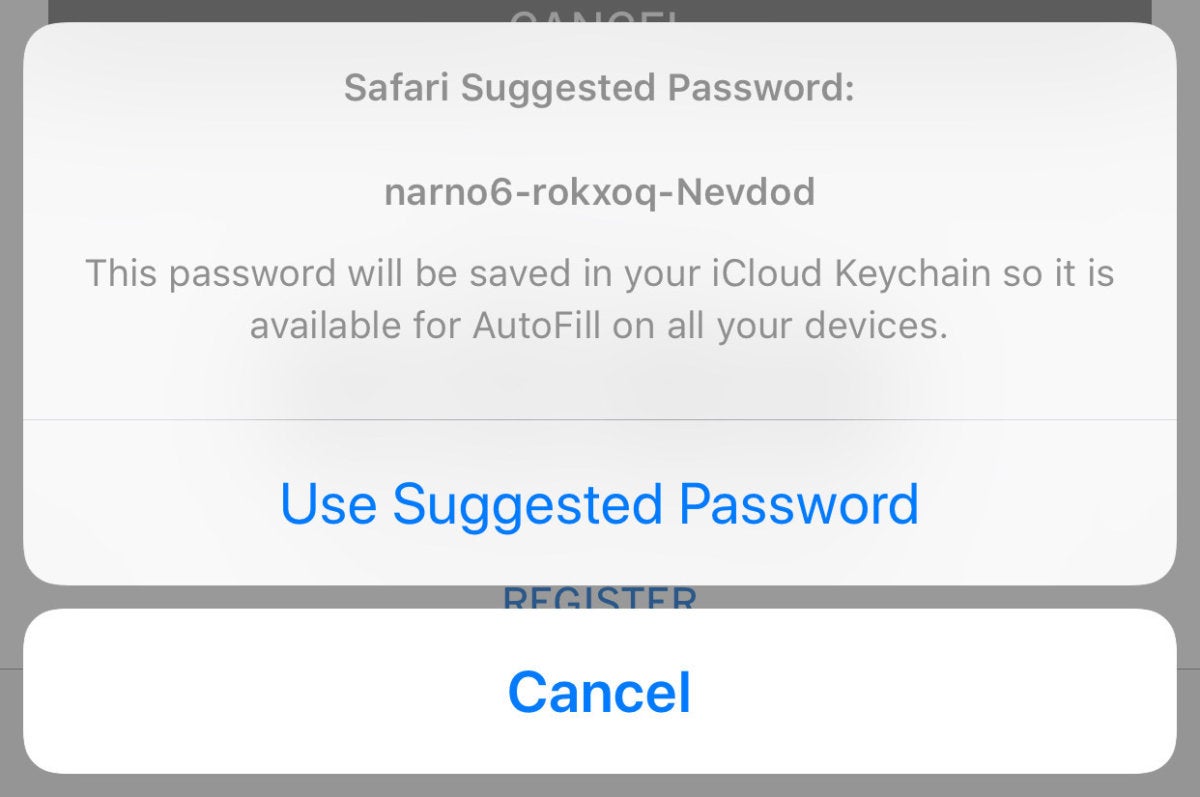
Use Suggested Password stores a password with Safari (and iCloud Keychain), but bypasses third-party storage.
Apple extending password availability to iOS apps was a big help, but it’s relatively difficult to access your passwords in iOS and Safari if you need them for other purposes in macOS or if an app hasn’t built in the necessary support.
How to retrieve a stored password in macOS
Select Safari > Preferences .
Click the Passwords tab.
Enter your account password to unlock the view.
Scroll or search for an entry.
Click the masked password (••••••••) and the password displays.
Control-click the password entry line and you can select Copy Password .
Switch to your password-management app, create an entry, and paste the password.
How to retrieve a stored password in iOS
Open Settings > Passwords & Accounts .
Tap Website & App Passwords .
Prove yourself with Touch ID, a passcode, or Face ID.
Scroll or search to find your password entry.
Tap the entry. The password is already revealed.
Tap the password to copy it.
Now switch to your password-management app to store it.
In both cases, you can also use AirDrop to send the password to another device.
You can deflect Safari’s password suggestion in macOS by clicking Don’t Use or in iOS by tapping Cancel . If you want to disable the behavior entirely:
In macOS, go back to the Passwords tab and uncheck Autofill User Names and Passwords at top. However, that disables autofill as well as suggestions.
In iOS, in the Passwords & Accounts setting, tap AutoFill Passwords and then turn AutoFill Passwords off. However, as with macOS, you lose both suggestions and autofilling.
This Mac 911 article is in response to a question submitted by Macworld reader Lynn.
Ask Mac 911
We’ve compiled a list of the questions we get asked most frequently along with answers and links to columns: read our super FAQ to see if your question is covered. If not, we’re always looking for new problems to solve! Email yours to [email protected] including screen captures as appropriate, and whether you want your full name used. Every question won’t be answered, we don’t reply to email, and we cannot provide direct troubleshooting advice.
Author: Glenn Fleishman , Senior Contributor

Glenn Fleishman ’s most recent books include Take Control of iOS and iPadOS Privacy and Security , Take Control of Calendar and Reminders , and Take Control of Securing Your Mac . In his spare time, he writes about printing and type history . He’s a senior contributor to Macworld , where he writes Mac 911.
Recent stories by Glenn Fleishman:
- How to find out what devices are logged into your iCloud account
- How to check for an unwanted account connected to your Apple ID
- How protected is your Mac without FileVault enabled?
How-To Geek
How to save passwords on iphone.
No more hassle of remembering passwords!
Quick Links
Step 1: enable autofill on your iphone, step 2: save a website password on iphone, view saved passwords on your iphone, sync your iphone's saved passwords with icloud keychain.
If you don't want to fill in your passwords manually, save those website passwords on your iPhone and you won't have to remember them anymore. We'll show you how to save, view, as well as sync your iPhone passwords with your other Apple devices.
To save passwords, you use your iPhone's AutoFill feature . This feature prompts you to save a password when you log in to a site. Later, when you return to that site to sign in, AutoFill automatically inputs the password for you.
You can use your iPhone's saved passwords on your Mac (and vice versa) by enabling iCloud Keychain on both your devices, as we'll explain below.
Related: How to Autofill Your Credit Card Number (Securely)
The first step is to enable the AutoFill feature on your iPhone. To do that, launch Settings on your phone and tap "Passwords & Accounts."
Select "AutoFill Passwords."
Turn on "AutoFill Passwords."
And that's it. The feature is now enabled.
Now that you've enabled AutoFill, launch a website in Safari , enter a password, and your phone will prompt you to save that password.
To do that, first, open Safari and access your site. On the site, log in to your account by entering your username and your password. Then, hit the log in or sign in button.
Safari will prompt you to save the entered password. You can choose one of the following three options:
- Save Password : To save the entered password on your phone, choose this option.
- Never for This Website : If you don't want Safari to ever ask you to save passwords for this site, select this option.
- Not Now : If you don't want to save the password right now, but you'd like Safari to ask you to do that in the future, tap this option.
If you chose "Save Password," Safari has saved your password. The next time you return to this site and attempt to log in, your browser will automatically fill in the password for you.
Related: 4 Ways to Open a Private Safari Tab on iPhone and iPad
You can view a list of all the saved passwords on your iPhone. To do that, first, open Settings on your phone and choose "Passwords & Accounts."
Select "Website & App Passwords."
Authenticate yourself using your preferred method.
You'll see a "Passwords" screen listing all your saved passwords. Here, you can manually review the list as well as use the "Search" box at the top to find a specific password.
To add a password to this list, tap the "+" icon in the top-right corner and enter your password details.
If you'd like to remove a saved password, then swipe left on that password and choose "Delete."
And that's it.
Using iCloud Keychain, you can sync your iPhone's saved passwords with your other devices, like an iPhone , iPad , or Mac , and vice versa.
To do that, you'll have to toggle on the feature on both your iPhone and your other Apple device.
To turn on iCloud Keychain on an iPhone, head to Settings > [Your iCloud Name] > iCloud > Keychain and turn on the "iCloud Keychain" option.
On a Mac, enable iCloud Keychain by heading into Apple Menu > System Preferences > Apple ID > iCloud and turning on the "Keychain" option.
Your saved passwords will now start syncing between all your Apple devices.
And that's how you eliminate the need to remember dozens of website passwords with your iPhone. Very useful!
While you're at it, consider using a password manager to save and manage all your website and app passwords, beyond just your iPhone and Mac.
Related: The Best Password Managers of 2023
- Editor's Choice: Tech Gifts for Mom
- iPad Pro vs. Surface Pro: What's the Difference?
How to Save Passwords on an iPad
Automatically fill in strong passwords on your iPad
:max_bytes(150000):strip_icc():format(webp)/matthew.s.smith.biopic-075658983c0849d5b7b0e849f94070cc.jpg)
- Beloit College
:max_bytes(150000):strip_icc():format(webp)/jonfishersquare-93eb80e77a004035887f56816d3623c5.jpg)
- Wichita Technical Institute
In This Article
Jump to a Section
- How to Use Keychain
- Enable Keychain
- Using a Third-Party Password Manager
- Frequently Asked Questions
What to Know
- In an app or web page, tap the Password field to open the iPad keyboard.
- A prompt appears with an automatically generated strong password.
- Tap Use Strong Password to select and save it or Choose My Own Password to create and save a custom one.
This tutorial shows how to save your passwords on an iPad and turn on Keychain if it's turned off. Instructions apply to iOS 15 and later.
How to Use Keychain to Save Passwords
Your iPad automatically generates passwords for web pages and in apps when it detects you've selected a password field. It also prompts you to fill in these fields with a password you previously saved in Keychain.
Follow these steps to use saved passwords on an iPad or create a new one for Keychain.
On a web page or app, tap the Password field.
A password option appears if Keychain has a password for the app. Tap it to place the password in the text field and log in as usual.
If successful, you're finished. The following steps only apply if the password doesn't appear or you need to save a new password.
If no password is saved, your iPad generates a strong password automatically.
Tap Use Strong Password to save the recommended strong password. Select Choose My Own Password to create your own instead.
Using your own password is less secure than using an automatically generated strong password. Saving passwords to your iPad means you don't need to remember each one.
If the iPad keyboard appears but no password prompt is displayed, tap the Keychain icon, which is a small, black key.
Keychain opens the Autofill Password screen with a list of saved passwords. Use the search field or scroll down to the one you need and tap it to place it in the password text field.
If you want to create another password, tap Add New Password near the top of the Autofill Password list.
Enter your username and a password . Tap Done to save the information to Keychain.
To view saved passwords, open the Settings app and select Passwords .
How to Turn On Saved Passwords on an iPad
If you don't see the prompt to save passwords or the Keychain icon, Keychain is likely turned off. Follow the steps below to turn on saved passwords on your iPad.
Open the Settings app.
Scroll down the Settings menu and tap Passwords .
Tap the toggle next to AutoFill Passwords to turn on the feature.
Can I Use a Third-Party Password Manager?
Apple Keychain is not the only way to save passwords on an iPad.
The iPadOS 15 updates added support for third-party password managers such as 1Password, LastPass, and mSecure. You can download these third-party password managers from the App Store.
After they are installed, your iPad will include the third-party password manager passwords in prompts.
An iPad can generate, save, and fill in strong passwords. This feature is available with Keychain or a third-party password manager.
If you use a third-party password manager app, you can pull up any credentials you've saved from the app itself. For Keychain passwords, go to Settings > Passwords . A list of the accounts you've saved to the Keychain will appear on the next screen; tap one to see its password.
Get the Latest Tech News Delivered Every Day
- How to Find a Wi-Fi Password on an iPhone
- How to Share Photos, Websites, and Files on the iPad
- How to Find Saved Passwords on Mac
- How to Set up and Use iCloud Keychain
- Should You Buy an iPad Keyboard? 3 Reasons Why You Might Want To
- How to Download and Save Photos and Images to the iPad's Camera Roll
- Is Google Password Manager Safe? What You Need to Consider Before Using It
- How to Use the Microsoft Edge Password Manager
- How to Save Passwords in Chrome for iOS
- How to Use the Chrome Password Manager
- How to Use Google Password Checkup for Android
- How to See Passwords in Chrome
- How to Use the Firefox Password Manager
- 9 Tips on Basic Computer Safety
- How to Manage Android Autofill Settings
- How to Enable or Change AutoFill Information on an iPhone
Safari User Guide
- Get started
- Go to a website
- Bookmark web pages to revisit
- See your favourite websites
- Use tabs for web pages
- Import bookmarks and passwords
- Pay with Apple Pay
- Autofill credit card info
- View links from friends
- Keep a Reading List
- Hide ads when reading
- Translate a web page
- Download items from the web
- Add passes to Wallet
- Save part or all of a web page
- Print or create a PDF of a web page
- Interact with text in a picture
- Change your home page
- Customise a start page
- Create a profile
- Block pop-ups
- Make Safari your default web browser
- Hide your email address
- Manage cookies
- Clear your browsing history
- Browse privately
- Prevent cross-site tracking
- See who tried to track you
- Change Safari settings
- Keyboard and other shortcuts
Autofill your username and password in Safari on Mac
With AutoFill, you can easily fill in your previously saved usernames and passwords for websites. You can also have a strong password created for you when you set up a password on a website. Fields where information has been entered for you are highlighted in yellow.
Open Safari for me
Create a strong password
A strong password is suggested for you, with a yellow background. To decline the suggested password, click the password field, click Don’t Use, then enter a password.
Enter the rest of the required information to create the website account.
If you have iCloud Keychain set up on your Mac, a unique, hard-to-guess password is automatically suggested when you first click the password field.
Autofill a password
If you previously stored your username and password for the website, use AutoFill to enter the information and sign in. Click in the username field, then choose your username (or use the Touch Bar ).
If your Mac or Apple keyboard has Touch ID , you can use Touch ID to fill in your stored username and password and sign in. If the web page has an option to remember your information (such as a “Remember me” tickbox) and you want to use that option, select it before you use Touch ID. If your Mac is connected to an external display while the built-in display is closed, enter the account password for your Mac, then click AutoFill.
Tip: If you set up iCloud Keychain to autofill information on your Mac and other Apple devices, you can use AutoFill to enter previously saved user names and passwords on all those devices.
If there’s no stored username and password for the website, save the information and use AutoFill next time. Enter the username and password, or automatically create a strong password (described below), then click Use Strong Password when asked.
Tip: You can also use your Apple ID and Sign in with Apple to create an account for the website. See Use Sign in with Apple .
If you can’t save a password or autofill a saved password
If you can’t save a password for a website or your password for a website isn’t filled in automatically, try any of the following:
Make sure you selected to autofill passwords: Choose Safari > Settings, click AutoFill, then make sure “Usernames and passwords” is selected.
How Safari keeps usernames and passwords secure
Usernames and passwords are encrypted in your macOS keychain . They’re also encrypted in your iCloud Keychain if it’s set up on your Mac.
If you remove usernames and passwords in Safari, they’re deleted from your macOS keychain. They’re also removed from your other Apple devices if your Mac and other devices are set up for iCloud Keychain.
For security, set up your Mac to display the login window when it starts up and to require a password after sleep or a screen saver begins. Set up your iPhone, iPad and iPod touch to require a passcode to unlock the screen: Go to Settings > Face ID & Passcode (or Touch ID & Passcode), then tap Turn Passcode On.
Important: Safari autofills your information for anyone who uses your Mac with your user login. It also autofills your information for anyone who uses your other Apple devices, if those devices and your Mac have iCloud Keychain set up.

9 Surprising Uses For Siri
I t's hard to believe that Siri is 13 years old. Apple introduced its digital assistant on the iPhone 4S all the way back in 2011, only four years after the first iPhone debuted. Siri has come a long way in the years since, providing new possibilities to perform tasks simply by talking.
Whether you're sending a text message while driving, making metric conversions while cooking, or trying to start your white noise app while rocking a crying baby, the hands-free power of Siri can be a huge benefit.
Apple's own documentation of the things Siri can do for you is brief and doesn't cover nearly all of the possible iPhone actions you can achieve with voice commands. For example, did you know you can now restart your iPhone with only your voice ?
If you want to learn more about what you can do on your iPhone with just your voice, check out these nine hidden Siri voice commands.
For more about Siri and the iPhone, check out the coolest new features in iOS 17 and how you can replace Siri with Amazon Alexa on your iPhone home screen .
No more 'Hey, Siri' needed
As long as you're running iOS 17, you no longer need to say "Hey, Siri" to activate Siri on your iPhone. All you need to do is say "Siri," and your iPhone will begin listening for any voice commands you tell it. For example, you can just say, "Siri, set an alarm for 8 a.m. this coming Thursday" -- no "Hey" needed.
Have Siri read an article in Safari to you
Another addition is the ability to have Siri read you any article, short story or other webpage -- as long as it's compatible with the Reader View feature. If you're unsure whether Reader View works on a webpage, tap the AA icon on the top left and make sure that the Show Reader setting isn't grayed out.
To have Siri read a Safari webpage to you, say something like, "Siri, read this to me," or, "Siri, I want to listen to this page." If you tap the new Listen to Page icon on the top left, you can change Siri's speaking rate so that the voice assistant speaks faster or slower.
Quickly find saved passwords for websites and apps
Apple lets you save your usernames and passwords across all your Apple devices, including your iPhone, through the iCloud Keychain. In iOS, you can go to Settings > Passwords to view your saved passwords for your Apple ID, websites and applications -- but you can access them quicker with Siri.
All you need to do is ask Siri, "Show me the password for (app/website)" and you'll be automatically redirected to that specific password page in your settings. Before you can view the password, you'll need to use Face ID or Touch ID to gain access. From there, you can copy the username or password to your clipboard.
Restart your iPhone
If you're experiencing a software issue, like an application continuously force-closing or a laggy operating system, you can often fix the problem with a quick restart of your iPhone. All you need to do is press down the home button, plus either volume button for about a second and then slide to power off your device -- but there's an easier way to reboot.
Read more : Your iPhone Has a New Siri Voice Command You'll Want to Know About
You can tell Siri, "Restart my phone" and then say, "Yes" when prompted to restart your device, without using your hands.
Turn off an annoying alarm
Your alarm is going off, but you're either not near your iPhone or maybe you just can't find it because it's underneath your sheets or lost in your couch cushions. An iPhone alarm will persist for 15 minutes if you don't cancel or snooze it, but there is a way to stop it with just your voice.
Even if your alarm is blaring loudly, you can tell Siri, "Turn off my alarm" to silence it. In fact, you can even just say, "Hey, Siri" and that will also stop your alarm from ringing. Unlike the snooze feature, using either Siri command will permanently turn off the alarm.
Find family or friends using the Find My tool
The Find My feature allows you to track not only your Apple devices but also those of your friends, family and loved ones. If you're tracking someone's location via Find My, like your significant other or your sibling, you can use Siri to quickly check where they're at.
Ask Siri, "Where is (contact name)?" and a small Find My window will appear at the top of the screen, showing you exactly where the person is. Siri will also announce how far they are and the approximate address of their location. If you tap the Find My window, you'll be redirected to the Find My app, where you can contact the person, get directions to their location and more.
Translate foreign words or sentences
Besides the stand-alone app, Apple's Translate feature is built into your iPhone, allowing you to quickly translate languages from pretty much anywhere on your device, including within your text messages, in your web browser and with Siri.
You can ask Siri to translate a single word or entire sentences with just your voice. For example, you can say, "Translate 'My head hurts. I think I'm going to sleep' in Spanish" and Siri will read out your sentence in the original language and then in the translated language. If you want to hear the translation again, you can hit the play button in the Translate window.
Currently, 17 languages, including Spanish and Chinese, are supported with Translate, but not all of them can be used with Siri.
Set reminders based on your location
The Reminders app on your iPhone is a powerful productivity tool to help you remember what you need to do throughout the day, like make a phone call, send an email or make a purchase online. But you don't need to be reminded of everything on your to-do list at all times, which is why you can use Siri to create a reminder notification based on your location.
For example, if you want to be reminded that you need to pay your internet bill when you get home, tell Siri, "Remind me to pay my internet bill when I get home" and a reminder will be created. The next time you arrive home (which you can set in Contacts or Maps), the reminder should pop up on your phone. Besides work and home, you can set your location to somewhere like Target or a local park, but Siri will need you to verify the exact address.
Get directions back to your parked car
Parked at an airport and lost track of your car? It can be difficult to find your way back to your car, especially if you didn't make a mental note and you're in a large parking lot or garage with hundreds of other vehicles. Fortunately, your iPhone usually knows where you parked your car -- all you need to do is ask Siri.
Say, "Get me directions to my car" and Siri will open the Maps application and get you walking directions to where it thinks your car is parked. Your iPhone tracks which other devices it's connected to, like your car stereo, as well as your traveling speed, to estimate where your car is parked.
While you're here, check out how to blur your home on Google Maps and how to find all those hidden Wi-Fi passwords on your Mac or Windows .
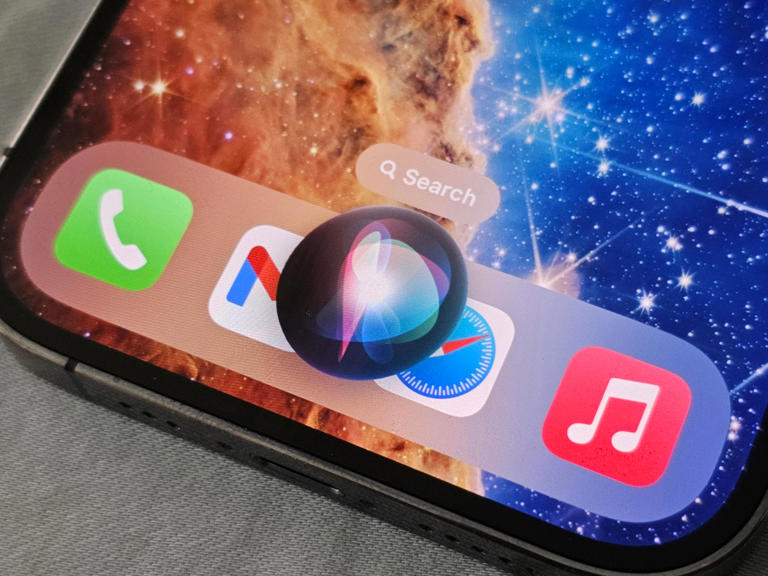

IMAGES
VIDEO
COMMENTS
View saved passwords and passkeys in Safari. Open Safari. From the Safari menu, choose Settings (or Preferences), then click Passwords. Sign in with Touch ID, or enter your user account password. Select a website, then click the Show Details button. To delete a password, click Delete Password. To update a password, click Edit, change it, then ...
On Mac, the Safari password manager is located by choosing Safari on the menu bar at the top left of your Mac. From there, click Settings from the pull-down menu. Next, click on the Passwords ...
Here's how. First, launch "Settings," which can usually be found on the first page of your Home screen or on your Dock. Scroll down the list of Settings options until you see "Passwords & Accounts." Tap it. In the "Passwords & Accounts" section, tap "Website & App Passwords." After you pass authentication (using Touch ID, Face ID, or your ...
Here's how to manually add usernames and passwords to Safari's AutoFill. Open the "Settings" app on your iOS device. Scroll down a bit and pick "Passwords.". Tap on the plus sign at the top. Fill in the information of the site you want to save. Double-check for any mistakes and tap "Done.".
Safari password list on Mac. To sort the list by website, username, or password, just click the column header. Editing passwords on Mac. To see details for the site, username, and password, select one and click Details or simply double-click it.. Here you can make edits to your saved username or password; however, this will not change those credentials on the actual website.
Here's how. First, launch Safari. In the menu bar at the top of the screen, locate the "Safari" menu and click on it. Then click "Preferences." A Preferences window will pop up that contains a row of icons stretched across the top. Click on the "Passwords" icon, which looks like a key. Next, Safari will tell you that the "Passwords Are Locked."
In iOS, you can manage your saved passwords and add new ones from the Settings app. 1. Open the Settings app. 2. Tap Safari then Passwords. 3. Use Touch ID or enter your passcode to continue ...
To import user names and passwords you exported from another browser into Safari, click the Action pop-up menu , choose Import Passwords, then select a CSV file. To save the user names and passwords for your website accounts in a CSV file, click the Action pop-up menu , choose Export Passwords, click Export Passwords, type a filename, then ...
Open the Settings app. Swipe down and tap on Passwords. Tap Edit in the top right corner to delete multiple logins or swipe from right to left to delete individual items. Tap on an item to see the ...
Using the Passwords Manager on Safari for iOS. Access the passwords manager by first opening the "Settings" on your iOS device. Scroll to and tap open "Safari" in the left column, then tap open the "Passwords" category. Before you can access your passwords, you will need to verify your identity using Touch ID.
If you've been using this feature regularly, you could potentially forget your password. Thankfully, you can recover the password pretty quickly even if you lose it. Let's review how to see and reveal a saved password directly in Safari for Mac. How to Find Saved Passwords in Safari for Mac. Viewing all the passwords you've entered while ...
Here's how you can enable AutoFill for passwords in Safari: Accessing Safari Preferences: To commence the process, launch Safari and navigate to the "Safari" menu located in the top-left corner of the screen. From the dropdown menu, select "Preferences" to delve into Safari's settings. Selecting the AutoFill Tab: Within the Preferences window ...
Then, when you enter a password in at a website, Safari will ask you whether you want to save it for future autofill. Bear in mind, of course, Apple's password autofill is a security risk, especially if you don't have a startup password or PIN code on your iPad.
How the Password Generator Works. The Password Generator can be accessed from the "AutoFill" tab in your Safari preferences. Simply click "Edit" next to "User names and passwords", and then select "Change Passwords" to bring up the Password Generator. The generator will then create a unique and secure password that you can use for your account.
This password can be used with a tap or the user can choose their own. After submitting the login form, Safari will give the option to save the generated or user-selected password. Since iCloud synchronizes passwords across Apple devices, logging in with an iPad or Mac is similar, and AutoFill will help manage passwords effortlessly. When using ...
Click the three horizontal dots within a circle at the bottom of the list of passwords. Highlight and select Export All Passwords…. Click the Export Passwords… button to confirm. Name the .csv file. Change the location for where you want to export Safari passwords. Click the Save button.
Select Safari > Preferences. Click the Passwords tab. Enter your account password to unlock the view. Scroll or search for an entry. Click the masked password (••••••••) and the ...
Launch Safari on your iPhone or iPad and browse to a website for which you already have an account. Enter your username and password, and a prompt should pop up asking if you want to save this ...
Go to Settings (the gear icon) > Safari > AutoFill. Toggle the switch and enter the necessary information to turn on autofill for credit cards and personal information. Next, turn on the AutoFill ...
Save Password: To save the entered password on your phone, choose this option. Never for This Website: If you don't want Safari to ever ask you to save passwords for this site, select this option. Not Now: If you don't want to save the password right now, but you'd like Safari to ask you to do that in the future, tap this option.
Use the search field or scroll down to the one you need and tap it to place it in the password text field. If you want to create another password, tap Add New Password near the top of the Autofill Password list. Enter your username and a password. Tap Done to save the information to Keychain. To view saved passwords, open the Settings app and ...
This video shows you how to save website usernames and passwords in Safari on your iPhone or iPad.See more videos by Max here: https://www.youtube.com/c/MaxD...
How to Use Password Sharing on SafariOn a Mac, choose Safari > Settings, and click on Passwords. After entering your password (or Touch ID, if enabled), control-click the site with the password ...
H ave you been using a password manager for your smart home security? Many of us store passwords in browsers like Chrome or Safari these days, but a standalone password manager makes a world of ...
In the Safari app on your Mac, when a website asks you to create a password, click the password field.. Click the AutoFill Key button , then choose Suggest New Password.. A strong password is suggested for you, with a yellow background. To decline the suggested password, click the password field, click Don't Use, then enter a password.
How to check your iPhone for cheaper app subscriptions. If you've bought a monthly subscription via Apple Pay, you can find all your monthly or yearly app subscriptions in one place on your Apple ...
Quickly find saved passwords for websites and apps. Apple lets you save your usernames and passwords across all your Apple devices, including your iPhone, through the iCloud Keychain.